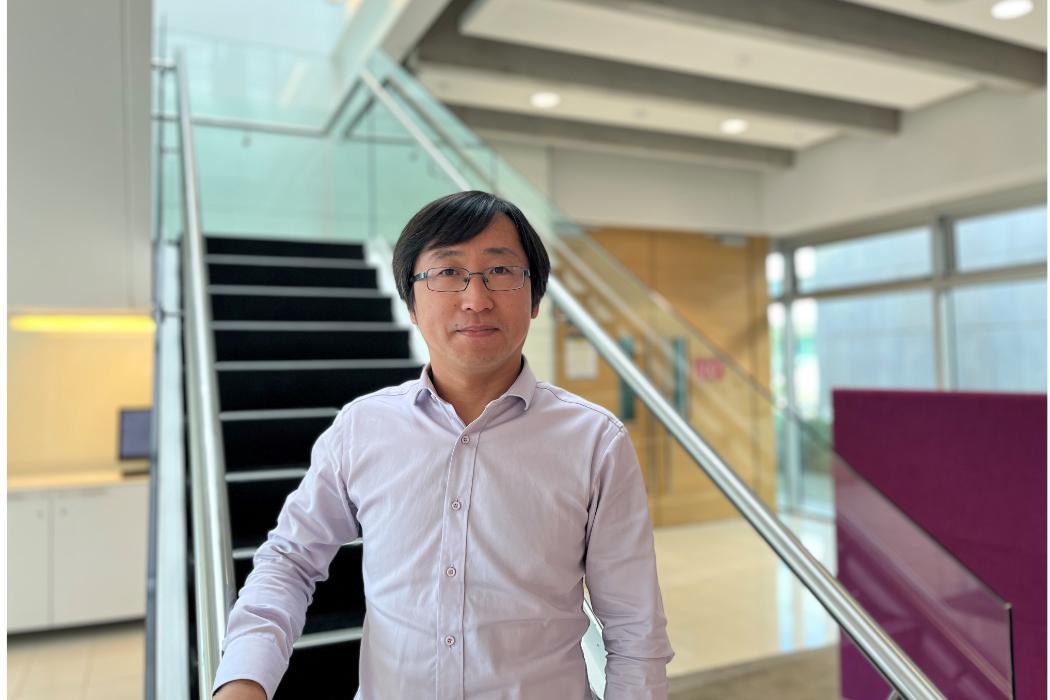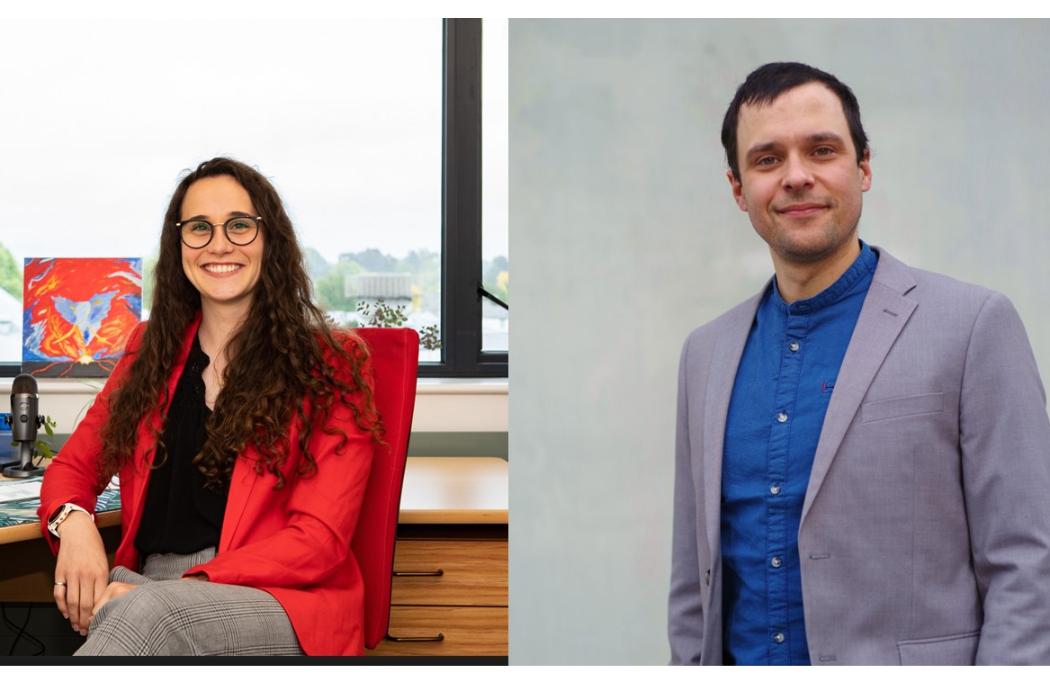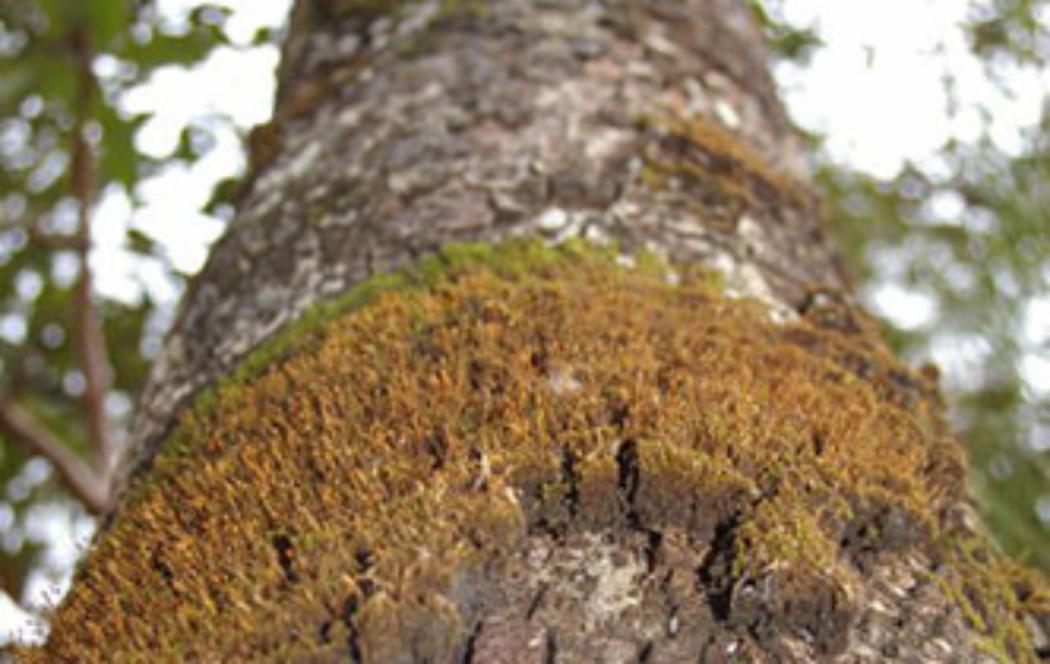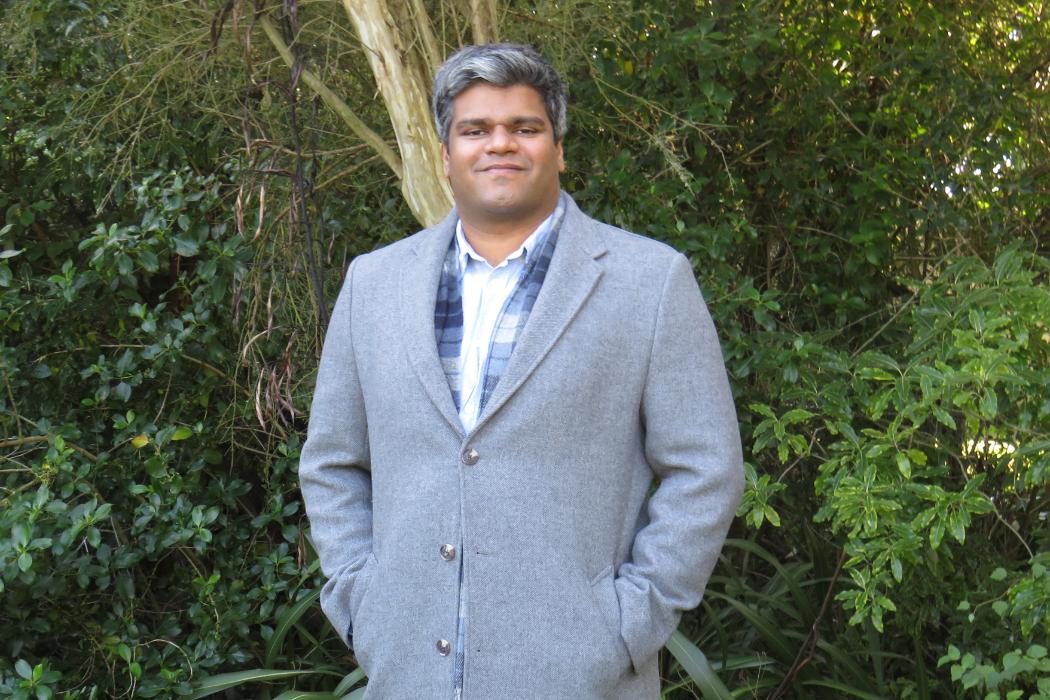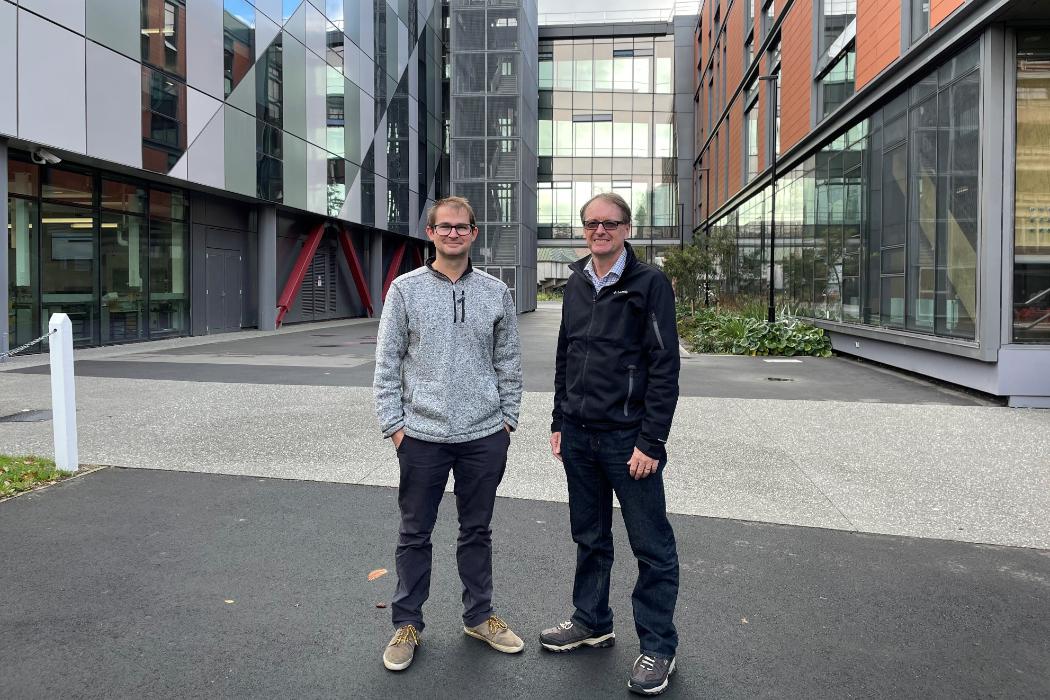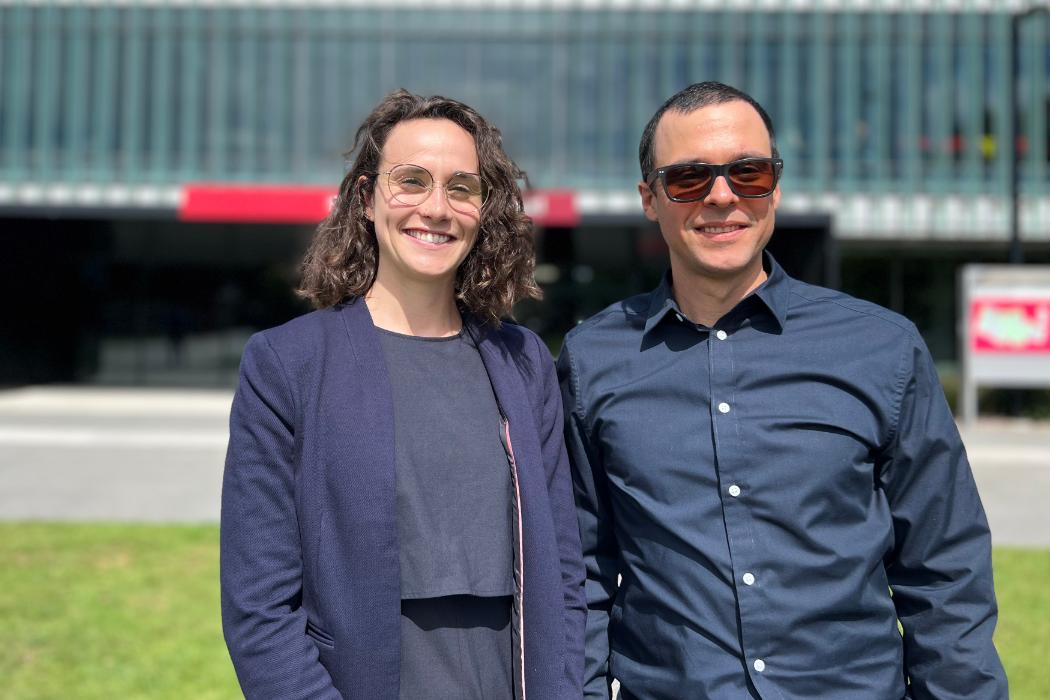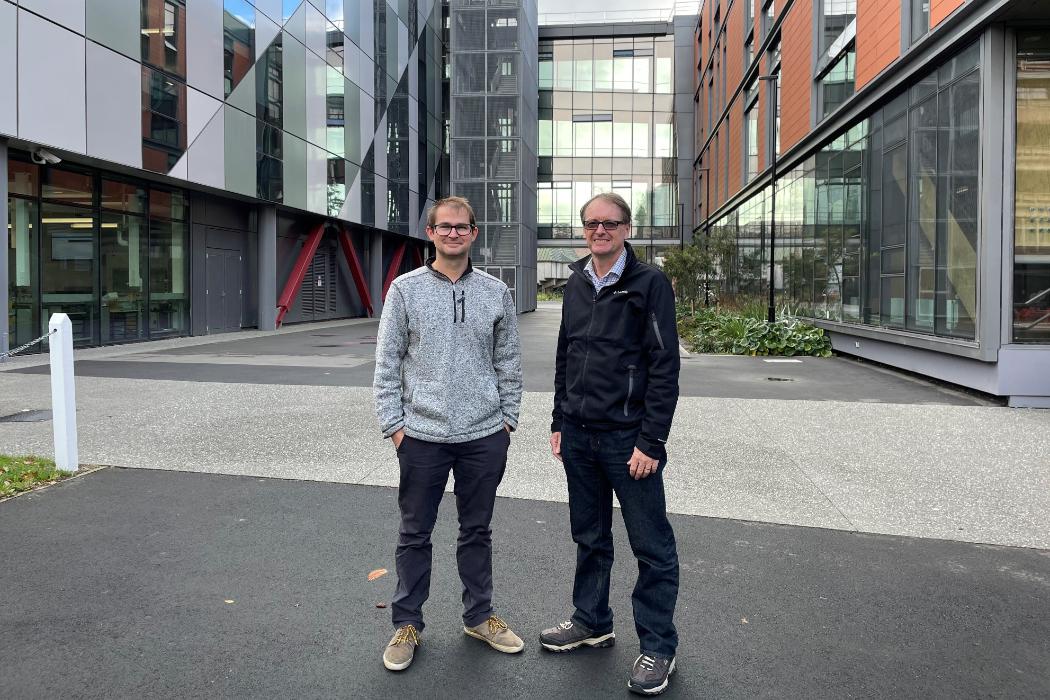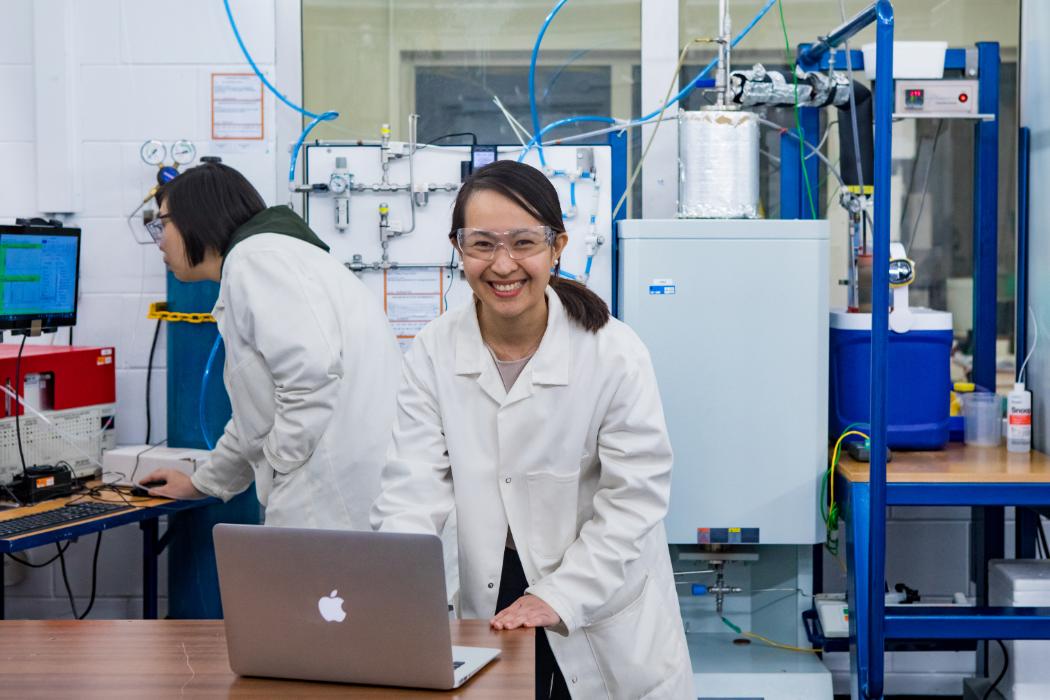Green hydrogen powering the future of NZ
The idea of using green hydrogen to power the world is nearly everywhere – it has the potential to alter the playing field for sustainable power, but it’s just that – an idea. Professor Any Nicol and Dr David Dempsey have received multi-million-dollar government funding to start making that idea a reality. The research team will answer critical questions for the future of green hydrogen in New Zealand. The team have found a handful of suitable sites and will continue to investigate these sites to find the most suitable. Once the team has answered outstanding questions, underground storage of hydrogen could enable us to store large amounts of energy for use during times of high demand. Their research will start laying the key foundations for a sustainably powered New Zealand.
Organic, recyclable batteries
Associate Professor Deborah Crittenden says long-life, high performance organic batteries are possible, and could be a cost-effective and environmentally conscious replacement for the lead-acid and lithium-ion batteries commonly used to store energy from rooftop solar panels. On a larger scale, they could help Aotearoa store energy generated from renewable wind and solar farm sources across the national grid. “We believe these batteries will play a critical role in helping New Zealand reach its climate change goals of 100% renewable electricity generation by 2035 and carbon neutrality by 2050,” she says. “We’re working on using room temperature molten salts made out of cheap and plentiful organic materials to boost the energy density of existing redox-flow batteries. We expect our batteries to be roughly on-par with lithium-ion batteries in terms of energy density and voltage, but because the energy storage components of our batteries are liquids, they will be instantly refillable and rechargeable and have substantially lower environmental impacts than other batteries on the market because of their sustainable and recyclable materials,” says Associate Professor Crittenden.
Producing green hydrogen from trees
Chemical and Process Engineering PhD student Jhulimar Castro is part of a team led by Professor Shusheng Pang that has been working on experimental research to convert the wood biomass to green hydrogen and securing future energy supply. “Green hydrogen is one of the best alternatives to fossil fuels, which is why it is a key factor in the Government’s net zero emissions by 2050 scenario,” says Castro. “It is important to me as a chemical engineer to contribute towards solutions for the world’s challenges through research, in this case climate change mitigation and energy security. In the future, my goal is to join an energy company to help with the commercialisation of this technology and to apply my research to do something beneficial for our communities, economy and environment,” says Castro.
Predicting natural power
Geothermal energy is extracted from heat deep beneath the Earth’s surface. Because it sits over the boundaries of two active tectonic plates, New Zealand has a number of geothermal areas. Geothermal fields are used for energy generation, however small earthquakes or hydrothermal eruptions could threaten that energy production. Dr Alberto Ardid and Dr David Dempsey are part of a research team developing new monitoring systems that can anticipate geothermal instability, by harnessing insights from data collected from geyser eruptions in Yellowstone National Park, USA. The goal is to provide new monitoring systems for the geothermal industry to help reduce risks to people or harm to the land resulting from small hydrothermal eruptions or earthquakes triggered by geothermal activity. Dr Dempsey, who oversees the research, says the aim is to help New Zealand’s geothermal industry adapt to future hazards environmental changes caused by humans, and climate-change mitigation strategies like carbon sequestration. “New Zealand’s geothermal industry has an enormous role to play in Aotearoa’s low carbon future, but we need to be alert to new hazards and be prepared to mitigate them,” says Dr Dempsey.
Māori perspectives in research on sustainable energy
Civil Systems Engineering Senior Lecturer Dr Rebecca Peer’s research project engages with Māori iwi and hapū to understand Indigenous perspectives on energy, sustainability, and energy transitions. The project supports ongoing research on pathways towards a net-zero energy system, with the goal of integrating mātauranga Māori into planning and evaluating our energy futures in Aotearoa New Zealand.
New EVs for UC
We aim to have a fleet of 97% fully electric/hybrid vehicles by 2030. This year we purchased six further electric and hybrid EVs (three passenger and three service vehicles) to replace our petrol and diesel vehicles. Additional charging points scattered around campus were also added.
Novel approach using night light
A novel statistical modelling method is helping to identify areas across the globe most in need of aid and infrastructure. The collaborative research of UC Professor of Statistics Elena Moltchanova and the International Institute for Applied Systems Analysis in Austria uses global earth observation systems to tackle large-scale problems. Professor Moltchanova says electrification holds great promise for increasing wellbeing, via off-grid power generation or grid electrification with significant positive impacts on household income, expenditure, health, and education. “Many poor areas do not have access to any electricity at all” and do not have “access to computers and phones which we take for granted” or “access to medical equipment, which again, requires electricity. So, for poorer areas, it is important to electrify”, says Professor Moltchanova.
Sharing knowledge worth millions
After receiving multi-million-dollar funding to unlock significant hydrogen concepts, UC and University of Otago researchers joined forces with community initiatives. The researchers are working in collaboration with a local Christchurch company, Fabrum. Together the teams will strive to embed skills and learning across pathways that will enhance the ability for learners to engage with all the aspects of renewable energy, including hydrogen in its many facets.
Research advancing green hydrogen energy
Civil Systems Engineering researchers Dr Rebecca Peer and Dr Jannik Haas are leading a project to develop an integrated energy system model for New Zealand that could provide sustainable transport, heating, and electricity. Chemical and Process Engineering Professor Aaron Marshall is leading a collaborative project to develop a new type of electrolyser – a tool that splits water into hydrogen and oxygen – to produce hydrogen energy in a more cost-effective way.
About the EPECentre
The Electric Power Engineering Centre (EPECentre) is a leading independent electric power and clean technologies research group, delivering specialist world-class research and innovation. Located on our Ilam campus, the EPECentre has strong understanding of the NZ Electricity landscape and NZ industry in general, including the manufacturing and primary sectors. With advanced laboratory facilities, the EPECentre team has high calibre researchers with cross-disciplinary capabilities, postgraduate students and support staff in management and technical roles. For over two decades now, the team has worked with large numbers of national and global industry partners and collaborators. The team delivers outcomes through research and development projects (funded by both government and industry), and specialist consulting services. EPECentre also delivers education supervision and teaching, including the provision of professional development courses.
Future Architecture of the Network
Led by UC, the Future Architecture of the Network (FAN) project is investigating what the future electrical power system might look like in Aotearoa New Zealand. The major research challenge is to determine the future architecture, topology and a transition pathway. FAN is funded by the NZ Government and involves researchers from five NZ universities and the University of Cambridge working together on the collaborative project. The main hypothesis is that high penetration of DC transmission and distribution (conveyance) into the AC grid will provide many benefits to transition to a low-carbon power system.
Low Carbon Freight Transport
EPECentre has been commissioned to undertake action-based, multidisciplinary research on a low carbon freight transport system in Aotearoa New Zealand. Phase 1 of the research project is underway, which aims to deliver over the next year a baseline of direct tank-to-wheel transport Greenhouse Gas emissions for key commodities and modes.
Transition Engineering short courses
There has never been a greater need for engineering to respond to the challenges of mitigation and adaptation. Transition Engineering professional short courses are about building a sustainable future. These short courses are supported by the Electric Power Engineering Centre, located on our Ilam campus. Transition Engineering is the way the projects of carbon down-shift get done. Long-term plans involve a lot more than meeting emissions targets, but at this critical time all of our infrastructure, buildings, land use and products must be redeveloped into the adaptive, resilient and low carbon versions. The short courses were developed to prepare engineers and professionals working in various fields and are delivered in a flexible and self-paced online format. Globally, they’re some of the only courses offered in the field.
Creating ‘green’ hydrogen to power our world
UC researchers are developing a carbon-neutral – even carbon-negative – way to create clean ‘green’ hydrogen to power our world more sustainably. Professor Shusheng Pang and Associate Professor Alex Yip are focusing on using renewable biomass – such as tree and plant waste from New Zealand’s forestry and agriculture sectors – to make green hydrogen. This clean energy source can be used to replace fossil fuels, including coal and natural gas, for transport, industry use, and heating our homes. Associate Professor Yip says: “We are using a unique approach based on new technology in catalysis to simultaneously generate high-purity hydrogen and enable CO2 capture. The overall process ‘unlocks’ the potential of using New Zealand biomass, such as trees, plants, and other renewable resources, which are abundant here.”
Unique research into tech-critical metals
Cutting-edge research into obtaining tech-critical metals from mixed oxides could play an important role in helping Aotearoa New Zealand transition to a zero-carbon country. The transdisciplinary team, led by UC’s Associate Professor Catherine Bishop, integrates experts in Materials Science and Engineering, Chemical and Process Engineering, and Minerals processing. The research is focused on the processing of tantalum, a hard to process metal; and neodymium, a rare earth metal, in the initial proof-ofconcept stage. These are used in capacitors and magnets, including the magnets that are a key component in almost all wind turbines. “Developing a new, carbon-free route to obtaining these critical metals will, with further innovation, be a means to achieving New Zealand’s low carbon goals; securing access to these metals has also been identified as essential for achieving equitable transition to low carbon goals by the International Energy Agency,” says Associate Professor Bishop.
Joining forces
We joined forces in a strategic partnership with the Western Institute of Technology in Taranaki to support the transition to clean energy and improve accessibility to education in Taranaki. The three-year agreement, effective from semester one in 2022, creates opportunities for joint teaching and for students to move more easily from one institution to the other. The partnership focuses on sustainable energy, business studies and on supporting mana whenua tauira|Māori students.
Vice-Chancellor, Professor de la Rey, says, “We believe that by working together and sharing our knowledge and expertise we can be more effective at cocreating real solutions for the challenges ahead. Taranaki is an early adopter in the transition to clean energy, moving away from fossil fuel industries, and we are looking forward to playing a part in the region’s ambitious Taranaki 2050 Roadmap. This could be an example for the rest of Aotearoa to achieve carbon emission goals while providing equitable transitions and sustainable community development."
Electric Power Engineering Centre
EPECentre and PEET are joint initiatives between the electricity industry and UC. EPECentre is a world-class clean technology research incubator that fosters collaboration and innovation. Ongoing research, with a positive impact on carbon emissions, includes new technology impact assessment (e.g. Electric Vehicle), research programmes on electricity grid transformation (e.g. defining the architecture of the future low-carbon power system) and electrification of transport (e.g. electric motor drives for large scale transport). Education and outreach activities delivered by EPECentre on behalf of PEET connect students, academia and industry to enhance the mutual experience.
Future-Proofing the NZ Electrical Grid
Professor Neville Watson, from UC’s Department of Electrical & Computer Engineering, leads a major project to ensure modern renewable energy can be integrated into New Zealand’s century-old electrical grid to futureproof the power supply and benefit every New Zealander. Professor Watson’s programme will research how high levels of direct current from renewable electricity technologies, like solar and wind power, electric vehicles and battery storage, can be efficiently integrated into the alternating current electrical grid as well as which parts of the electrical grid would be better served by using direct current for conveyance.
Education in Renewable Energy
Global needs for renewable energy are constantly rising. In our minor in Engineering Processing Technologies programme, students gain insight into the various kinds of energy, such as hydrogen, geothermal, solar, hydropower and wind, and learn how to identify opportunities to reduce energy demand. In other UC programmes, students can learn about the variety of renewable energy resources and conversion technologies, system modelling techniques, challenges to sustainability, and practical solutions to common issues. Graduates can continue with the Master of Civil Engineering (Renewable Energy) or Master of Engineering Studies (Renewable Energy) programmes.
Minor in Power Engineering
Efficient and sustainable power generation and transmission is highly important in the modern world. Systems such as generators, transformers, and motors are widely used across different industries, and therefore need graduates with the expertise to create and improve these. UC students can investigate electric power generation, distribution, and usage through electrical devices in our Power Engineering minor programme. They learn about the different forms of power, how power is created and about specialised systems, such as renewable energy.
Greener Future in Solar Cell Technology
Dr Paula Brooksby, a Senior Researcher in UC’s School of Physical and Chemical Science, is at the forefront of research to refine fast-advancing solar cell technology. Dr Brooksby is exploring the potential of a carbon-based material (graphene) to revolutionise photovoltaic technology and performance. With the support of a grant from the Marsden Fund, Dr Brooksby and co-researcher Dr Noel Duffy (CSIRO) plan to fully investigate graphene as a tool in solar cell design. Their goal is to be the first to engineer thin transparent grapheneorganic film electrodes to evaluate their potential use in perovskite solar cells.
A Graduate’s Voice on Renewable Energy
Sonam Zam completed UC’s Master of Engineering Studies (Renewable Energy). Sonam works at the stateowned Druk Green Power Corporation in Bhutan, which operates and maintains hydropower assets. Bhutan is landlocked, mountainous, and highly dependent on hydropower. “My Master’s project focused on pumped hydro which will be important in Bhutan because at present we don’t have reservoirs for storing water. What I’ve studied in New Zealand is renewable energy, hydro, solar and wind and I’m hoping I can apply these back at home. In some remote areas of Bhutan, hydropower isn’t viable so solar and wind-generated energy would be more practical options. I was completely new to those when I came here [to New Zealand]” says Sonam.



